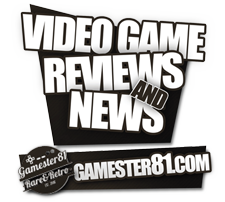Console: Nintendo Entertainment System
Manufacturer: Nintendo
Availability: October 18th, 1985 (North America)
Price: $299 for the Deluxe Set ($646.16 including inflation)
History:
The Nintendo Entertainment System (also known as the NES or simply Nintendo) is an 8bit home video game console released in North America on October 18th, 1985. The NES was later released in Europe in 1986 and Australia in 1987, and was known as the Nintendo Famicom in Japan (released in 1983).
In North America after the video game crash of 1983 many felt that the video game industry would not return. People felt that the video game industry was too saturated and that there were too many non-quality games available.
Nintendo had found success in the early 1980’s with their arcade division including the iconic game Donkey Kong, and the Nintendo Famicom was selling well in Japan. Initially, Nintendo wanted to develop an advanced 16bit home console with a keyboard that would act as a full fledged computer. At the time Nintendo’s President Hiroshi Yamauchi made the decision to go with a less expensive and more cost friendly cartridge based console. The codename for the project was called “GameCom”, but Nintendo soon decided to change the name to “Famicom” meaning family computer; though technically it’s not one. Nintendo based the controller design on their successful Game & Watch handheld controls. The first Game & Watch to use a D-pad was Donkey Kong.
The Famicom sold well in Japan and soon Nintendo turned its focus to other markets. Nintendo wanted to enter the North American market and saw Atari as a company to work with. Nintendo and Atari were in negotiations to brand and distribute the Famicom under Atari’s name as the “Nintendo Advanced Video Gaming System”. The deal was close to being signed until Atari discovered at the 1983 Consumer Electronic Show that their biggest competitor Coleco was displaying Donkey Kong, a very popular Nintendo arcade game on their Colecovision home console. This upset Atari because they had exclusive rights for Donkey Kong on the home computer, and so it delayed negotiations and eventually Nintendo decided to market their system on their own.
By 1985 the Famicom had sold over 2.5 million systems in Japan, and Nintendo had announced plans to release the Famicom to North America. Many publications including Electronic Games were skeptical of Nintendo and didn’t think they’d have success in the North American market. Nintendo decided to test market their new system in New York and eventually released it nation wide in February of 1986.
Nintendo was aware of the skepticism for video games in the mid 1980’s, so they decided to redesign the Famicom and re-brand it as the Nintendo Entertainment System. The system was referred to as a “console deck”, the games were called “Game Paks” and the overall bundle was called an “Entertainment System”. Nintendo also released an accessory called R.O.B the Robot (meaning Robotic Operating Buddy). R.O.B. was short lived, but the intent was to market the NES as a novel entertainment center and not just a video game system.
The NES was launched with 18 titles including: 10-Yard Fight, Baseball, Clu Clu Land, Donkey Kong Jr. Math, Duck Hunt, Excitebike, Golf, Gyromite,Hogan’s Alley, Ice Climber, Kung Fu, Pinball, Stack-Up, Tennis, Wild Gunman, Wrecking Crew, Mach Rider and Super Mario Bros. The Game Pak’s boards were nearly identical to the Famicom ones, however the board size on the NES is larger to create a region lock. Many of the earlier launch titles are simply Famicom game boards with an adapter built into the Game Pak to enable it to play on the NES.
Nintendo also introduced the “Nintendo Seal of Quality” to ensure consumer confidence. The 10NES was a lockout chip in games that would prevent non licensed companies to develop games for the NES, though later Atari under the name Tengen would work around this chip.
Today the NES is considered the best-selling console of all time, and has revolutionized the gaming industry and how 3rd party games are licensed. It also helped regenerate excitement back into the video game industry that had been feeling the effects of the video game crash of 1983.
Periphrals and Accessories:
In addition to R.O.B. the NES has a number of different peripherials and accessories that were released for it, including both 1st party and 3rd party releases. These include: TheZapper light gun, U-Force, Satellite, Power Glove and Power Pad to name a few.
Redesign:
In October of 1993 Nintendo decided to introduce The NES-101, or better known as the “top loader”. The NES-101 has the same color sheme as the original NES, but it was marketed at the low price of $49.99 USD ($75 today including inflation). The NES-101 has a bright red power switch, has no power light and the games plug in at the top standing upright. The controllers were also redesigned and are known as “dogbone controllers”.
Nintendo also decided to not include the 10NES chip to eliminate a common red blinking problem with the original model, and now allows games from other regions and unlicensed games to play on the system.
What are some of your memories over the Nintendo Entertainment System? What are some of your favorite games? Leave comment below and let us know.
For additional History of Console reviews: Click Here
Join the new Gamester81 forums: http://dev2017.gamester81.com/forum







